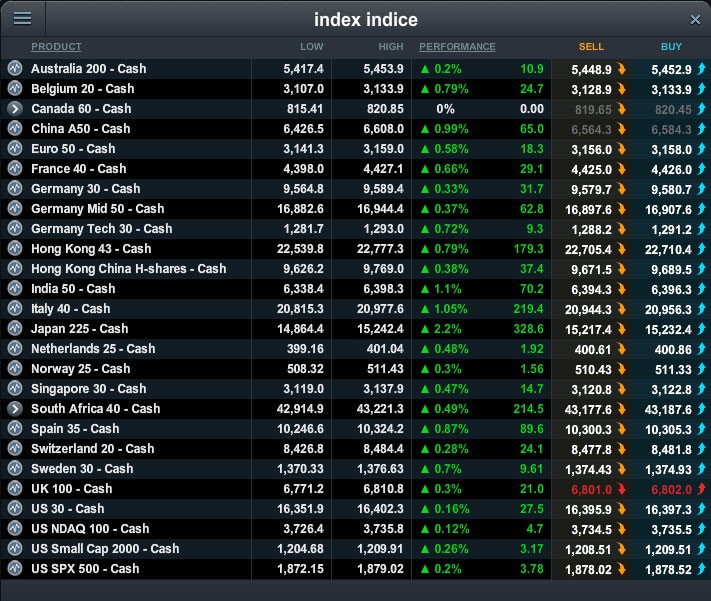Sector index overviews
Post on: 10 Май, 2015 No Comment

S&P/ASX All Ordinaries Gold Index
The S&P/ASX All Ordinaries Gold Index (XGD) includes companies from the Gold sub-industry of the All Ordinaries Index and serves as an ideal market indicator for the Gold industry. The index follows the broader All Ordinaries index methodology, therefore companies included in this index are not filtered for liquidity or adjusted for freefloat. Metals & Mining and Gold Indices fact sheet (PDF 123KB)
S&P/ASX 200 A-REIT Index
The S&P/ASX 200 A-REIT Index (XPJ) contains the listed vehicles classified as REITs. REITs own property and derive income from rental returns. A REITs sector has been created for the Australian market, where REITs are treated almost as a separate asset class to equity, and are often managed on a separate basis.
S&P/ASX 200 Consumer Discretionary Index
The S&P/ASX 200 Consumer Discretionary Index (XDJ) encompasses those industries that tend to be the most sensitive to economic cycles. Its manufacturing segment includes automotive, household durable goods, textiles and apparel and leisure equipment. The services segment includes hotels, restaurants and other leisure facilities, media production and services, and consumer retailing and services.
S&P/ASX 200 Consumer Staples Index
The S&P/ASX 200 Consumer Staples Index (XSJ) comprises companies whose businesses are less sensitive to economic cycles. It includes manufacturers and distributors of food, beverages and tobacco and producers of non-durable household goods and personal products. It also includes food & drug retailing companies as well as hypermarkets and consumer super centers.
S&P/ASX 200 Energy Index
The S&P/ASX 200 Energy Index (XEJ) comprises companies whose businesses are dominated by either of the following activities: the construction or provision of oil rigs, drilling equipment and other energy related service and equipment, including seismic data collection; or, companies engaged in the exploration, production, marketing, refining and/or transportation of oil and gas products, coal and other consumable fuels.
The S&P/ASX 200 Financial Index (XFJ) contains companies involved in activities such as banking, mortgage finance, consumer finance, specialised finance, investment banking and brokerage, asset management and custody, corporate lending, insurance, and financial investment, and real estate, including REITs.
S&P/ASX 200 Financials excluding A-REITs Index
The S&P/ASX 200 Financials excluding A-REITs Index (XXJ) contains all the companies in the Financials sector except those that are classified as A-REITs.
The S&P/ASX 200 Health Care Index (XHJ) encompasses two main industry groups. The first includes companies who manufacture health care equipment and supplies or provide health care related services, and owners and operators of health care products, providers of basic health-care services, and owners and operators of health care facilities and organisations. The second group includes companies primarily involved in the research, development, production and marketing of pharmaceuticals and biotechnology products.
S&P/ASX 200 Industrials Index
The S&P/ASX 200 Industrials Index (XNJ) includes companies whose businesses are dominated by one of the following activities: the manufacture and distribution of capital goods, including aerospace & defense, construction, engineering & building products, electrical equipment and industrial machinery; or, the provision of commercial services and supplies, including printing, employment, environmental and office services; or, the provision of transportation services, including airlines, couriers, marine, road & rail and transportation infrastructure.
S&P/ASX 200 Information Technology Index
The S&P/ASX 200 Information Technology Index (XIJ) covers the following general areas: firstly, Software & Services, including companies that primarily develop software in various fields such as the Internet, applications, systems, databases management and/or home entertainment, and companies that provide information technology consulting and services, as well as data processing and outsourced services; secondly, Technology Hardware & Equipment, including manufacturers and distributors of communications equipment, computers & peripherals, electronic equipment and related instruments; and thirdly, Semiconductors & Semiconductor Equipment Manufacturers.
S&P/ASX 200 Materials Index
The S&P/ASX 200 Materials Index (XMJ) encompasses a wide range of commodity-related manufacturing industries. Included in this sector are companies that manufacture chemicals, construction materials, glass, paper, forest products and related packaging products, and metals, minerals and mining companies, including producers of steel.
S&P/ASX 300 Metals and Mining Index

The S&P/ASX 300 Metals and Mining Index (XMM) is based on the S&P/ASX 300 index and comprises companies that are classified as being in the Metals and Mining industry. The index includes producers of aluminium, gold, steel, precious metals and minerals and also diversified metals and minerals. Metals & Mining and Gold Indices fact sheet (PDF 123KB)
S&P/ASX 200 Resources
The S&P/ASX 200 Resources Index (XJR) consists of companies from the S&P/ASX 200 index where the company is classified as belonging to the Energy sector or the Metals & Mining industry.
S&P/ASX 200 Telecommunications Services Index
The S&P/ASX 200 Telecommunications Services Index (XTJ) contains companies that provide communications services primarily through a fixed-line, cellular, wireless, high bandwidth and/or fiber optic cable network.
S&P/ASX 200 Utilities Index
The S&P/ASX 200 Utilities Index (XUJ) encompasses those companies considered to be electric, gas or water utilities, or companies that operate as independent producers and/or distributors of power.
S&P/ASX 200 Bank Index
The S&P/ASX 200 Banks Index consists of companies from the S&P/ASX 200 index where the company is classified as belonging to the Banks Industry Group.
Accumulation Indices
Accumulation indices exist for all of the indices listed above. Accumulation indices assume that dividends are reinvested and so measure both growth and dividend income. Price indices (non-accumulation indices) do not take dividends into account and measure price growth only.














